Ethiopians can be quite funny when writing foreign names. Here you can eat spahketi or order latte-makiyto, you are welcam or can sleep at the land-scap hotel. Also the name of our next destination was such a funny mistake: Gondar. Of course, everyone knows that correctly it would be written Gondor, and it is beyond doubt that it really refers to the country from the “Lord of the Rings”. Sorry Kiwis, the real Middle-Earth is in Ethiopia.
The “Shire” landscape is similar to NZ, but a fortress like in Gondar you will search in vain in Down-Under. And each one looking at pictures will directly know what we mean. However, there is a legend concerning the history of this castles complex which we find completely implausible. According to our admittedly very knowledgeable guide, Gondar was built in the 17th century by the Ethiopian King Fasilidas. During the century before, Ethiopia – just like Austria – struggled with the Ottoman invasion but finally was able to push out the conquerors, also thanks to the help of the newly arrived Portuguese. And after the Ottoman threat had vanished, these Jesuits supported them to build their new capital. Every successor of Fasilidas added an own palace, library, music hall, sauna or lion cage to the compound, making the whole area more and more impressive. Unfortunately during the occupation before World War II, the Italians made it their headquarters and you can guess how Italy defended its headquarters against the Royal Air Force. Although nowadays big parts are destroyed or in ruins, you can still get the fascination of that place where 3 cultures met.
Fellow readers of Tolkien’s saga will correctly state that Gondor is more than a fortress. That’s right, and the perfect “Lord of the Rings” landscape can be found at the nearby Simiens Mountains. So we went to Debark next day to organize another hiking trip. Unfortunately, if you don’t want to book a full organized tour for 100 USD per person per day, this is easier said than done. First, there are many annoying touts hanging around idly, waiting for some tourist to rip him off. In each transaction you make, they always try to get involved to push up prices and gain a commission. Moreover, Ethiopians authorities do their best to make the life of independent travellers harder. Elsewhere, hundreds of thousands of people live from budget travellers but here the government seems to prevent them from making their fortune. They favor extremely expensive travelling programs and we would be very surprised if at least half of the money did not go to some corrupt officers. This is why there is nearly no infrastructure on the trek. You can sleep in a few community lodges (or in the only noble lodge for 150 USD per night), food is not available (so already for a couple of day you have to hire a cook and a mule for carrying) and worst, foreigners are forbidden to use the public transport to reach the entrance (so they have to pay 40 € for 15 km – or walk).
Given that we did not have so much time and – more important – did not want to support this policy, we decided to do a short trek of 2 days to the first of the community lodges. We did not hire a guide nor a cook nor a mule and carried everything on our own, only a scout was mandatory. Armed with a nostalgic riffle, he knew and guided us over the tiny little paths perfectly, and we were lucky with him. Not so lucky we were with the weather. The night before it rained a lot so the tracks were as muddy as a “Takeshi’s Castle” parcours. It was definitely no fun, and after some hours it started pouring. All our clothes and shoes were dripping wet and we hurried to a private house in a mountain village, feeling damn cold and without having seen anything from the allegedly fantastic views. All we had experienced was mud, fog and rain. At least, the people in this house welcomed us as warmly as the fire we sat around, but anyway we were extremely frustrated. We stayed there for some hours, intended to spend the night in the village and to go back the next morning. Nevertheless, after our lunch, the conditions improved and our scout had a surprise for us (actually everything he did was a surprise to us because he did not speak a single word of English). He motivated us to go and see the baboon monkeys, which according to our hosts were only 3 minutes away. So we went there with bare feet and our last dry clothes. Of course, it were not 3 minutes but rather half an hour through mountains and rivers. Still, we were highly rewarded. The monkeys were nice and pretty close to watch, and even better, just 5 minutes further away was the first scenic point of the national park. We had thought we would not see anything of the landscape at all, now we stood on the cliffs, overlooking the breathtaking “Abyssinian Abyss”, while below us eagles were flying. Within a few minutes, our hike had changed from failure to success. Knowing we had not missed everything, we even appreciated the experience of living in such hard and simple conditions like so many Ethiopians do, and we enjoyed sharing normal life with them. The next day the weather was fine, so on our way back our scout again guided us to see the stunning scenery of the valley. With the sun shining, the trails were much dryer and more enjoyable. Back in Debark, it was one of the first time where we liked giving a generous tip to our scout, since he really had worked humbly and tried to do his job as good as possible.
Missing our stories about weird religious practice? Here comes the next one: Before leaving Debark, we intended to give the Ethiopian Orthodox Church another chance and went to church for Sunday service. After waking up at 6 in the morning, we walked to the nearby church and were quite astonished. People did not enter the church and stood outside in front of the door or in the yard. Inside we heard some persons chanting, but it seemed that everyone was singing a different song. All the time, people came and left again, some had a Bible with them and read while kissing every page. Others spent several minutes in front of the doors, making some previously not known gesture of surrender. Some time later, two boys came along with a covered image of something still unknown – immediately followed by a donation box – and everyone could kiss the concealed picture. We were not able to see any structure, people did not interact at all, and to us it seemed more like a strange shaman ritual. Sorry, we would have liked to write something positive, but the truth is we are not any wiser than before.
Our guest-houses in Gondar and Debark: Queen Taitu Pension and Simien Park Hotel
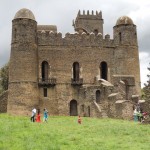
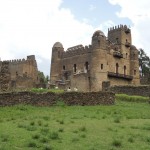
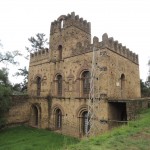
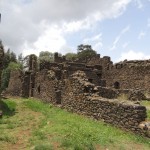
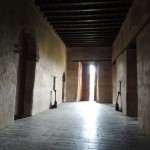
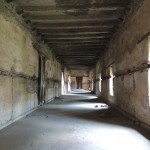
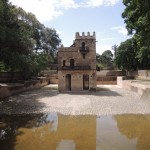
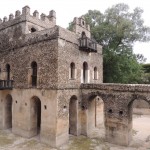
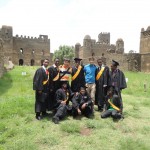
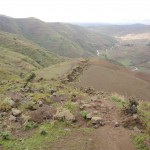
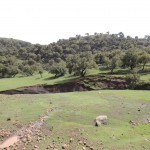
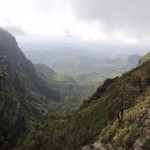
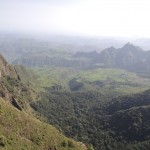
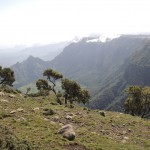
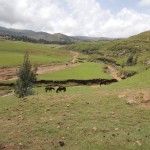
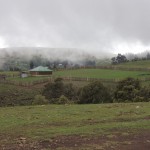
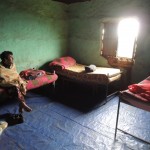
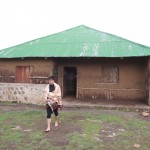
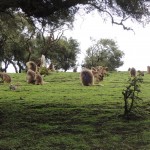
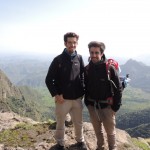
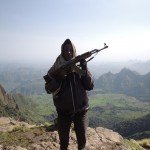
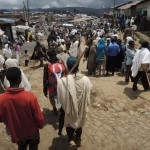
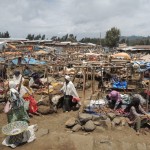
Tu as posté ça le 7 juillet, donc, le jour des 85 ans de Mamie — c’était hier et on est allé exprès à Paris avec Antoine (avant son départ en Norvége le 26 juillet)
C’était une belle journée vraiment sympa, détendue, ensoleillée, bref très réussie.
—
A propos de ton article (c’est quoi le “middle-earth” au juste??) et de toute l’eau qui vous est tombée dessus pendant votre randonnée avec votre beau garde du corps: à La Réunion, le responsable du camp (camp situé dans la montagne) rappelant les révoltes des esclaves (les “marrons”) nous avait fait un fort bel éloge de la pluie et de ce que nous appelons tous le ‘mauvais’ temps … … Alors puisque vous n’êtes pas allés en Iran et maintenant que vous n’en êtes plus si loin de La Réunion, allez donc le voir — on peut vous indiquer l’endroit
Wenn ich jetzt in einem normalen Zustand wäre – und nicht um 2.30 h nachts vom Heinerfest nach Hause gekommen wäre,hätte ich vielleicht alles verstanden. Ich versuche es morgen nochmal:-)